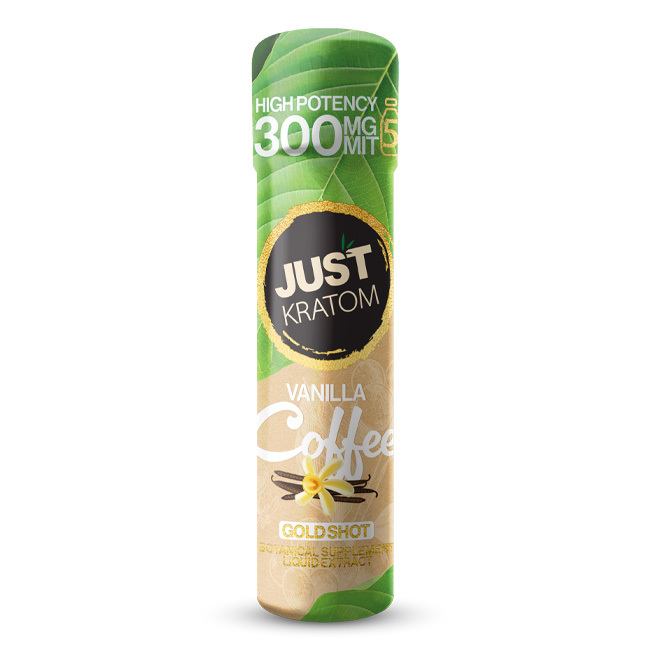Kratom’s Potential Effects on Pain
Kratom, an herbal supplement derived from the leaves of the Mitragyna speciosa tree, has gained attention for its potential pain-relieving properties.
Analgesic Properties of Mitragynine and 7-Hydroxymitragynine
The analgesic effects of kratom are primarily attributed to two alkaloids: mitragynine and 7-hydroxymitragynine. Mitragynine is a potent mu-opioid receptor agonist, meaning it binds to and activates the same receptors as morphine. This activation leads to pain relief, similar to how opioid painkillers function.
7-Hydroxymitragynine also exhibits analgesic properties but through a different mechanism. It acts as an agonist at both mu-opioid receptors and kappa-opioid receptors. Kappa-opioid receptor activation is associated with pain modulation and has shown potential for treating chronic pain.
Studies Examining Kratom’s Impact on Chronic Pain
Kratom, derived from the Mitragyna speciosa tree, has emerged as a potential natural remedy for pain management.
Studies exploring kratom’s impact on chronic pain are ongoing, but early research suggests promising results.
- Some studies indicate that kratom may be effective in reducing pain associated with conditions like arthritis, fibromyalgia, and nerve pain.
- Animal studies have shown kratom’s effectiveness in managing pain comparable to morphine, attributed to its interaction with opioid receptors in the brain.
Mechanisms of Action
Understanding how kratom exerts its pain-relieving effects is crucial for assessing its potential as a therapeutic agent. Kratom’s analgesic properties are primarily attributed to two key alkaloids: mitragynine and 7-hydroxymitragynine.
Interaction with Opioid Receptors
Mitragynine, the primary alkaloid in kratom, functions as a potent mu-opioid receptor agonist. It binds to and activates these receptors, mimicking the action of opioid painkillers like morphine. This activation triggers pain relief by modulating the perception and transmission of pain signals in the nervous system.
7-Hydroxymitragynine, another key alkaloid in kratom, demonstrates a dual mechanism of action. It acts as an agonist at both mu-opioid receptors and kappa-opioid receptors. Activation of mu-opioid receptors contributes to pain relief, while activation of kappa-opioid receptors is linked to pain modulation and has shown promise in treating chronic pain conditions.

Other Possible Pathways
Beyond its primary effects on opioid receptors, kratom may exert analgesic effects through other pathways.
- Anti-inflammatory activity: Some studies suggest that kratom possesses anti-inflammatory properties. Chronic inflammation can contribute to pain perception, so reducing inflammation may indirectly alleviate pain.
- Neurotransmitter modulation: Kratom alkaloids may influence the activity of other neurotransmitters involved in pain processing, such as serotonin and norepinephrine.
- Central nervous system effects: Kratom’s interaction with various neurotransmitter systems could lead to central analgesic effects, influencing pain perception at a higher level.
Safety and Side Effects
While kratom shows promise as a natural pain reliever, it is essential to understand its potential side effects and safety considerations. Like any substance, kratom can have adverse reactions, and its long-term effects are still being studied.
Potential for Addiction and Dependence

It’s important to be aware of the potential side effects and safety concerns associated with kratom use. Common side effects include nausea, vomiting, constipation, dizziness, itching, sweating, and dry mouth. In some cases, kratom can also lead to more serious side effects such as seizures, liver damage, and withdrawal symptoms.
- The potential for addiction and dependence with kratom use is a significant concern.
- Kratom’s mechanism of action involving opioid receptors raises the risk of developing tolerance and dependence, similar to other opioid medications.
Interactions with Other Medications
Kratom can interact with various medications, potentially leading to adverse effects or reduced efficacy.
It’s crucial to inform your healthcare provider about any medications you are taking before using kratom, as it can interact with:
- Opioid medications: Kratom’s opioid-like effects can amplify the sedative and respiratory depressant effects of opioids like morphine or oxycodone, increasing the risk of overdose.
- Central nervous system depressants (e.g., benzodiazepines, alcohol): Combining kratom with these substances can lead to excessive sedation, respiratory depression, and increased risk of accidents.
- Monoamine oxidase inhibitors (MAOIs):** Kratom may interact with MAOIs, leading to potentially dangerous increases in blood pressure or serotonin syndrome.
- Blood thinners:** Kratom may have blood-thinning effects and could increase the risk of bleeding when taken with medications like warfarin.
It is crucial to consult a healthcare professional before using kratom, especially if you are taking any medications or have underlying health conditions.
Adverse Reactions
While kratom shows promise as a natural pain reliever, it is essential to understand its potential side effects and safety considerations. Like any substance, kratom can have adverse reactions, and its long-term effects are still being studied.
It’s important to be aware of the potential side effects and safety concerns associated with kratom use. Common side effects include nausea, vomiting, constipation, dizziness, itching, sweating, and dry mouth. In some cases, kratom can also lead to more serious side effects such as seizures, liver damage, and withdrawal symptoms.
The potential for addiction and dependence with kratom use is a significant concern. Kratom’s mechanism of action involving opioid receptors raises the risk of developing tolerance and dependence, similar to other opioid medications.
Kratom can interact with various medications, potentially leading to adverse effects or reduced efficacy. It’s crucial to inform your healthcare provider about any medications you are taking before using kratom, as it can interact with: Opioid medications: Kratom’s opioid-like effects can amplify the sedative and respiratory depressant effects of opioids like morphine or oxycodone, increasing the risk of overdose. Central nervous system depressants (e.g., benzodiazepines, alcohol): Combining kratom with these substances can lead to excessive sedation, respiratory depression, and increased risk of accidents. Monoamine oxidase inhibitors (MAOIs): Kratom may interact with MAOIs, leading to potentially dangerous increases in blood pressure or serotonin syndrome.
Blood thinners: Kratom may have blood-thinning effects and could increase the risk of bleeding when taken with medications like warfarin.
Legal Status and Regulations
The legal status and regulations surrounding kratom vary significantly across the globe. In some countries, kratom is fully legalized and available for purchase without restrictions. In others, it is prohibited or heavily regulated.
The United States, for example, has a complex relationship with kratom. While it is not classified as a controlled substance at the federal level, many states have implemented their own bans or restrictions on kratom sales and possession.
Global Perspectives on Kratom Legality
The legal status and regulations surrounding kratom vary significantly across the globe. In some countries, kratom is fully legalized and available for purchase without restrictions. In others, it is prohibited or heavily regulated.
The United States, for example, has a complex relationship with kratom. While it is not classified as a controlled substance at the federal level, many states have implemented their own bans or restrictions on kratom sales and possession.
Several countries in Asia, including Thailand and Malaysia, have banned kratom entirely due to concerns about its potential for abuse.
In Europe, kratom’s legal status is diverse, with some countries allowing it while others restrict or prohibit it. For instance, Germany has classified kratom as a “psychotropic substance” and requires permits for its possession and sale.
Australia also prohibits the importation and sale of kratom. Canada has adopted a cautious approach, classifying kratom as a non-controlled substance but advising against its use.
Regulations in Specific Countries
The legal status and regulations surrounding kratom vary significantly across the globe. In some countries, kratom is fully legalized and available for purchase without restrictions. In others, it is prohibited or heavily regulated.
The United States, for example, has a complex relationship with kratom. While it is not classified as a controlled substance at the federal level, many states have implemented their own bans or restrictions on kratom sales and possession.
Several countries in Asia, including Thailand and Malaysia, have banned kratom entirely due to concerns about its potential for abuse.
In Europe, kratom’s legal status is diverse, with some countries allowing it while others restrict or prohibit it. For instance, Germany has classified kratom as a “psychotropic substance” and requires permits for its possession and sale.
Australia also prohibits the importation and sale of kratom. Canada has adopted a cautious approach, classifying kratom as a non-controlled substance but advising against its use.
Future Research Directions
Future research directions in kratom pain management should focus on elucidating its long-term safety profile, including the potential for addiction, dependence, and chronic health issues. Further investigation is needed to determine optimal dosages, delivery methods, and potential interactions with other medications.
Exploratory studies could examine kratom’s efficacy in managing specific types of chronic pain, such as neuropathic pain or fibromyalgia. Research into its potential anti-inflammatory properties and neurotransmitter modulation mechanisms could provide a deeper understanding of its analgesic effects. Finally, conducting well-designed clinical trials with larger participant groups is crucial to establish definitive evidence regarding kratom’s safety and efficacy for pain management.
Need for Further Clinical Trials
Future research directions in kratom pain management should focus on elucidating its long-term safety profile, including the potential for addiction, dependence, and chronic health issues.
Further investigation is needed to determine optimal dosages, delivery methods, and potential interactions with other medications.
Exploratory studies could examine kratom’s efficacy in managing specific types of chronic pain, such as neuropathic pain or fibromyalgia.
Research into its potential anti-inflammatory properties and neurotransmitter modulation mechanisms could provide a deeper understanding of its analgesic effects.
Finally, conducting well-designed clinical trials with larger participant groups is crucial to establish definitive evidence regarding kratom’s safety and efficacy for pain management.
Investigating Long-Term Effects
Future research directions in kratom pain management should prioritize a comprehensive understanding of its long-term effects.
Longitudinal studies are needed to assess the potential for chronic health issues, addiction, and dependence associated with prolonged kratom use.
Investigating optimal dosages, administration methods, and potential interactions with other medications will be crucial in ensuring safe and effective pain management.
Further research should explore kratom’s efficacy in treating specific types of chronic pain, such as neuropathic pain or fibromyalgia.
Delving deeper into kratom’s mechanisms of action, including its potential anti-inflammatory properties and modulation of neurotransmitter systems, will provide valuable insights into its analgesic effects.
Rigorous clinical trials with large sample sizes are essential to establish robust evidence regarding kratom’s safety and efficacy for pain management.
Order Kratom Gold Shots for Instant Focus
- Downturned Smile Treatment Near Shalford, Surrey - September 23, 2025
- How To Tell If Someone Has Lip Filler - September 23, 2025
- Dermal Fillers Near Chilworth, Surrey - September 21, 2025
